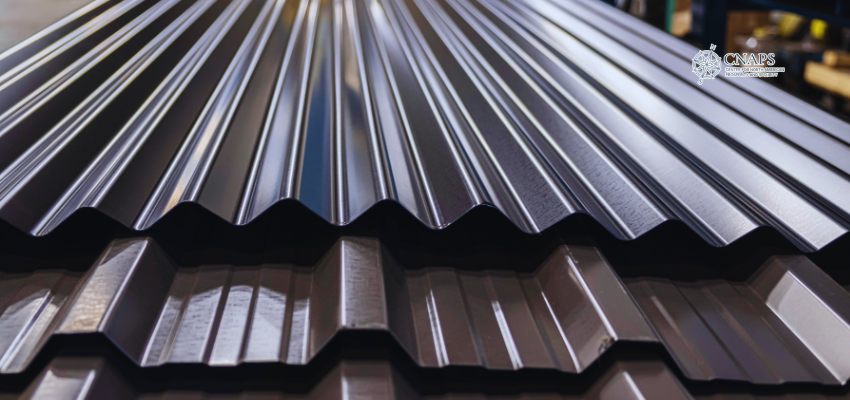This article originally appeared in The Hub.
By Fen Osler Hampson and Tim Sargent, February 10, 2025
After round one of Trump’s tariff wars, we’re still in the ring, bloodied but standing. But there is little time to celebrate. Trump’s going to come at us again because, like any bully, he knows we’re cowed and frightened. And he’s going to ask for more. A lot more.
Trump is in a hurry. He knows he has to deliver tangible results on his economic revitalization agenda before the mid-term Congressional elections, after which he will enter the twilight of his presidency.
Trump’s weekend announcement that he is going to impose 25 percent tariffs on all U.S. steel and aluminum imports, including those from Canada, is but the first salvo.
We should not panic or act precipitously. The U.S. gets 82 percent of its aluminum from foreign suppliers and 17 percent of its steel. Canada is its top supplier of both.
In the case of aluminum, there is virtually no prospect of substitution in the short or even medium term by American producers so the U.S. is going to have to continue to import aluminum whether Trump likes it or not.
In the case of steel, we should remember the last time there was a tariff war, U.S. steel production did not rise significantly because investors did not want to make long-term investments in a sector in what was a temporary spat. They won’t be rushing in this time either.
Because his steel and aluminum tariffs this time are directed at all countries from which the U.S. imports—and not just Canada and Mexico—we are less disadvantaged than we were in the last tariff war. In fact, ironically, our falling exchange rate may make us more competitive vis-à-vis other importers even with Trump’s new tariffs.
Steel and aluminum are key intermediary goods in the production of cars, airplanes, appliances, and also sorts of things that Americans manufacture and consume. It is not going to be easy to pass a whopping 25 percent tariff to American consumers and production in some sectors—like autos—may grind to a halt. We can be sure that Americans are not going to take this lying down as the impact of his latest impetuous move sinks in.
Our best strategy is to watch the political fireworks in Washington and work closely with our American friends who are just as upset as we are with Trump’s tariffs as they press their case on the White House, Congress, and in U.S. courts.
We also need to accelerate the timetable for the renegotiation of CUSMA to limit the uncertainty and further collateral damage from Trump’s trade edicts. Trump has set an April 1 deadline to “investigate the causes of our country’s large and persistent annual trade deficits in goods, as well as the economic and national security implications and risks resulting from such deficits, and recommend appropriate measures, such as a global supplemental tariff or other policies, to remedy such deficits.” Talks should begin right after that process is completed and we should initiate them.
Trump will almost certainly issue new demands and threaten more bruising tariffs if we don’t comply. His cudgel will land on those things he has railed about before—defence spending, supply management, digital services, intellectual property, and the widely-held rule in banking (the reason why more U.S. banks haven’t set up shop in Canada).
Unlike what we agreed to on the border and fentanyl, which were relatively quick fixes (it doesn’t require vast sums of money to rent a couple of Blackhawk helicopters, appoint a Fentanyl Czar, and hire more border agents), his new demands will be much more challenging to deliver upon because they will require substantial sums of money and because some are political dynamite.
But this time around we can throw Trump’s new demand for reciprocity from key U.S. trading partners right back at him: if we get rid of tariffs and subsidies, he has to do the same.
Supply management will be at the top of Trump’s list. Trump hates Canada’s dairy and poultry supply management policies, which were carve-outs in CUSMA and NAFTA. They are a major irritant to dairy farmers in Wisconsin, which is one of the states that was key to his election win.
None of the parties in an election year will want to touch an electrified rail that will affect the lives and fortunes of large swaths of rural voters in Quebec and Ontario. Getting rid of supply management will also pour gasoline on the smoldering fires of Quebec separatism.
But to man the barricades with a “no concessions” approach, as Trade Minister Mary Ng recently asserted, just won’t cut it anymore. Trump will have no compunction about levying tariffs across broad swathes of the Canadian economy to get what he wants. It is also unlikely that rattled Canadian consumers will truck being held hostage to a small sector of the economy that already charges them exorbitant prices for key grocery items like milk and eggs.
The reality is that Canadian farmers could easily give Wisconsin farmers a run for their money: we have plenty of arable land and lots of fresh water (dairy cows drink a lot of water). However, despite its criticism of Canada, the U.S. also protects its dairy industry, through subsidies and price supports. We should therefore not open our markets to U.S. producers unless Trump agrees to allow our producers to compete on a level playing field in the U.S. market. That should be the quid pro quo in any negotiation.
Defence will also be at the top of Trump’s list of demands. Americans have a security fixation, and Trump is no exception. One thing we can be sure of is that Trump is going to come at us as hard on defence as he did with the border and fentanyl.
Setting a date of 2030 to meet our spending commitments, as Liberal leadership candidate Mark Carney recently proposed, just won’t cut it. Sorry, but Trump wants to see results right now.
To be clear. We won’t be able to raise our spending to 2 percent of GDP in the time frame he wants. It’s not as if we can immediately turn on a tap even if we fix our byzantine and dysfunctional procurement system and start ordering new kit for our forces today.
The smart thing to do with Trump is to change the conversation to what we can buy from Americans to reequip our armed forces. We will need to buy a lot of new equipment: submarines, drones, fighter jets, if the Canadian Forces are to be ready for the 21st century. Here again, we should tell Trump we insist on reciprocity.
If we make a deal and tender contracts with U.S. defence suppliers and manufacturers, we must insist on getting some of America’s business in return. And if he doesn’t play the game we should tell him bluntly that there are other vendors, like the Europeans or Koreans, from whom we can buy instead, as in the case of submarines.
Trump has also said he wants to build an “iron dome,” like Israel’s, to defend North America against missile attacks from China, Russia, and North Korea. And it’s not just ICBMs and SLBMs that pose a threat, but cruise missiles, long-range RPVs, and drones.
We should tell Trump that we should work on building an “Arctic dome” together because we have lots of know-how when it comes to AI, surveillance, and the challenges of operating in harsh climates, etc.
A tariff war will lead to mutually assured destruction. In every conversation we have with Trump and his officials, we need to hammer home the obvious. If Trump hits us with tariffs, there will be a lot less money for Canada to spend on defence and what we buy and procure from America.
Furthermore, as the U.S. ramps up its own defence production and industrial base, which is woefully inadequate, they are going to need our steel, aluminum, energy, and critical minerals to build ships, airplanes, rockets, submarines, drones, tanks, and everything that goes into them, notwithstanding his uninformed statements to the contrary.
Fen Osler Hampson is the Chancellor’s Professor & Professor of International Affairs at Carleton University.
Tim Sargent is a Senior Fellow and the Director of the Domestic Policy Program at the Macdonald-Laurier Institute, and Distinguished Fellow at the Centre for International Governance Innovation.








